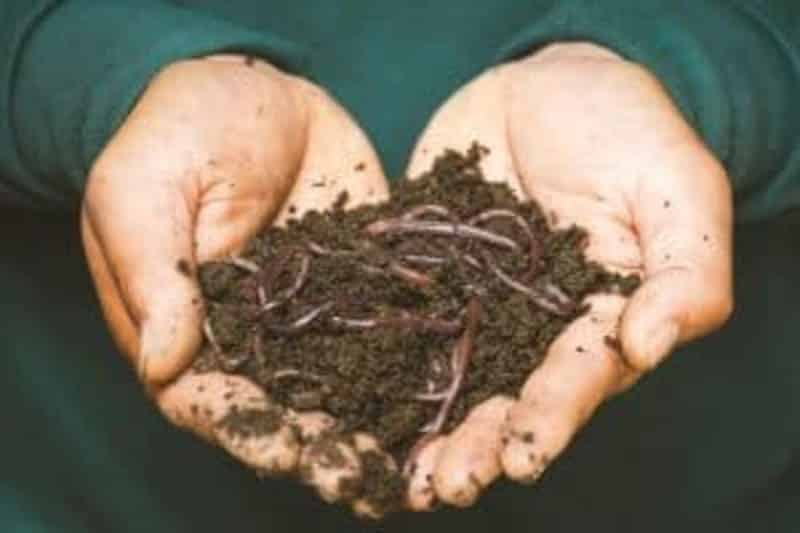Composting. This can be a scary idea. You hear all of the horror stories. The dos and don’ts, so many rules and regulations. It isn’t a scary thing to compost. In fact, it is quite easy. All you need is a place away from where you spend your time and some kind of area or container. Creating and maintaining a compost pile is a great way to enhance your gardening, produce even better food, and use up garbage that might otherwise end up in the landfill when it’s so usable. Here we are going to discuss an easy way to save money while naturally enhancing your gardening soil.
Why Compost
There are so many reasons to compost. Composting is an easy way to use up leftovers and yard waste. Freshly made compost is a great natural way to improve your soil, moderating the pH balance and mediating fertility problems with subpar soil, regardless of what kind of soil you are dealing with. It provides nutrients that plants need in order to grow and produce whether you are growing pretty flowers or food for your family and community. Even if you are lucky enough to live in an area with really good soil, using it to grow your plants depletes the nutrients that are there.
Year after year you are going to want to feed your soil by adding rich dark compost to keep it great soil. Compost restores important and beneficial organisms to the solid that helps break down the nutrients so that the plants can process it. These micro-organisms also help to prevent many harmful pathogens from attacking and damaging your plants and many of these organisms cannot be present in prepackaged compost. These organisms also help to keep pathways open so that the plant’s roots can readily reach and use the necessary water and nutrients it feeds on from the dirt.
What You Need to Compost
This is where there is a lot of different information out there. You can buy tumblers that you can turn and mix by turning a handle that rolls the barrel. You can buy bins that allow you to keep your compost contained. These are great if you live in a place with little space or where you are close to neighbors. However, all you really need is a place to make a pile.
We have an area, away from our house, where we created three sections using used pallets. We continuously have three separate compost piles “cooking.” Each year we move to the next bin, the oldest being the one we are currently using, and which becomes the new pile the following year as we move to the next bin. This means that at any given year, we are using compost that is at least three years old. It has had a long time to cook.
What Goes Into the Mix
The basics that need to go into the compost mix are:
- Carbon – this would include any materials that are dry, tough, fibrous, tan, or brown. Examples include dry leaves, straw, rotted hay, sawdust, shredded paper, and cornstalks.
- Nitrogen – provides protein-rich materials that the micro-organisms need to grow. This includes freshly pulled weeks, lawnmower clippings, over-ripe fruits and veggies, and leftovers from the kitchen (green matter only, no meats). Other protein-rich materials include manure and animal by-products like blood or bone meal.
- Water – you want to keep your compost moist but not drown. If you are using a bin, you will want to make sure you keep it covered if there are no drain holes. We keep ours in an area where the rain runs off. If you need to add water because it doesn’t stay moist naturally, use a sprayer to sprinkle it each time you turn it which is a must if it’s enclosed in a bin or tank.
- Oxygen – This is why you need to turn or aerate your pile or bin. The microorganisms will use up the oxygen present as they grow and work. Without Oxygen, they will become sluggish or die.
What goes in your Compost Bin
|
Green Ingredients High in Nitrogen |
Brown Ingredients High in Carbon |
| Coffee grounds | Cardboard |
| Flower clippings | Corncobs |
| Freshly pulled or cut weeds | Corn stalks |
| Grass clippings | Dry leaves |
| Kitchen left-overs | Nutshells |
| Seaweed | Shredded paper |
|
Tea bags and leaves |
Straw |
| Twigs/sticks | |
| Wood shavings/sawdust |
Cooking Your Compost
Ever wonder why they call it cooking your compost? I did, and I’m not sure if this is why but it makes sense to me. Your compost could and probably will get hot. Yes, this is normal. As the microorganisms do their work eating through and processing the materials in your compost pile, it could very well get hot. This depends on the types of organisms you end up with in your pile or bin. There are three types of microbes that work in your compost pile and each work best in a particular temperature range.
Psychrophiles work in cool temperatures, as low as 28° F. As they process the materials, the temperature starts to rise. Mesophilic bacteria take over when the pile warms to 60° to 70°F. They do most of the decomposition work. If there is enough carbon, nitrogen, air, and water, present, the temperature in the pile will rise to around 100°F.
This is when the thermophilic bacteria start its part of the job. These bacteria work to raise the temperature high enough to kill any disease-causing organisms as well as any weed seeds that may be lingering from the green and brown materials added. Once it reaches 155°, you can be sure that you only have a few more days until your compost is ready.
Wrapping it Up
See! Easy. We pile each thing in as we go. We don’t turn ours as it gets plenty of air and water as well as browns and greens. Every 1 to 2 weeks, the grass/weed clippings from the lawnmower, and the straw from the duck house go into whichever bin we are currently filling. Table and kitchen scraps are added along with the remnants from the rabbit cage as well. Lots of both green and brown. We always end our bin for the year with a wet messy layer of duck house straw to insulate it for the winter and then let it go.
Ours are definitely overcooked as they generally sit for a couple of years, but we never run out. Each year we have plenty to supplement whatever we need to supplement. You might think it would get stinky but it doesn’t. You will never notice it. If your bin is open, you do want to keep it away from your house or outbuildings because it will draw pests and you don’t want them near where you live. Your gardens will love you for this wonderful food.
For More Great Content
Total Apex is an all-encompassing content producer. We provide heavily detailed articles every day on entertainment, gaming, sports, and so much more! Check out all our great sports content at Total Apex Sports. Check us out on X @TotalApexEandG and our other sites: Total Apex Sports Bets and Total Apex Fantasy Sports.





